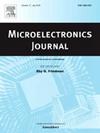基于多PUF响应混淆的抗机器学习认证方案
IF 1.9
3区 工程技术
Q3 ENGINEERING, ELECTRICAL & ELECTRONIC
引用次数: 0
摘要
利用物理不可克隆功能(PUF)的传统认证协议在建模攻击中存在漏洞,本文提出了多仲裁器-PUF混淆PUF (MAO PUF)架构。该架构包含n个仲裁puf (apuf)和k级线性反馈移位寄存器(LFSR),其中n个apuf的响应用于混淆LFSR的配置参数,从而增强对基于机器学习的建模攻击的抵抗力。(n,k)-MAO PUF架构在Xilinx Virtex-7现场可编程门阵列(FPGA)平台上实现,表明(5,3)-MAO PUF在资源开销和性能指标之间实现了最佳平衡。(5,3)-MAO PUF依赖于5个apuf的响应来混淆3级LFSR的初始种子和反馈系数。该方法将三种主流机器学习攻击的预测精度降低到接近50%,同时保持统计特征接近理想值。此外,基于(n,k)-MAO PUF的结构特征,我们进一步提出了一种特别适用于物联网(IoT)系统的新型高安全认证协议。本文章由计算机程序翻译,如有差异,请以英文原文为准。
Authentication scheme resistant to machine learning based on obfuscation of multiple PUF responses
Traditional authentication protocols leveraging Physical Unclonable Functions (PUFs) face vulnerabilities to modeling attacks, this paper proposes multi-Arbiter-PUF obfuscation PUF (MAO PUF) architecture. This architecture incorporates Arbiter PUFs (APUFs) and a -stage Linear Feedback Shift Register (LFSR), where the responses from n APUFs are employed to obfuscate the LFSR's configuration parameters, thereby enhancing resistance against machine learning-based modeling attacks. The (n,k)-MAO PUF architecture was implemented on a Xilinx Virtex-7 Field Programmable Gate Array (FPGA) platform, demonstrating that the (5,3)-MAO PUF achieves an optimal balance between resource overhead and performance metrics. The (5,3)-MAO PUF depends on responses from five APUFs to obfuscate both the initial seed and feedback coefficients of a 3-stage LFSR. This approach reduces the prediction accuracy of three mainstream machine learning attacks to nearly 50 %, while maintaining statistical characteristics close to ideal values. Furthermore, based on the structural characteristics of (n,k)-MAO PUF, we further propose a novel highly secure authentication protocol which is particularly suitable for the Internet of Things (IoT) systems.
求助全文
通过发布文献求助,成功后即可免费获取论文全文。
去求助
来源期刊

Microelectronics Journal
工程技术-工程:电子与电气
CiteScore
4.00
自引率
27.30%
发文量
222
审稿时长
43 days
期刊介绍:
Published since 1969, the Microelectronics Journal is an international forum for the dissemination of research and applications of microelectronic systems, circuits, and emerging technologies. Papers published in the Microelectronics Journal have undergone peer review to ensure originality, relevance, and timeliness. The journal thus provides a worldwide, regular, and comprehensive update on microelectronic circuits and systems.
The Microelectronics Journal invites papers describing significant research and applications in all of the areas listed below. Comprehensive review/survey papers covering recent developments will also be considered. The Microelectronics Journal covers circuits and systems. This topic includes but is not limited to: Analog, digital, mixed, and RF circuits and related design methodologies; Logic, architectural, and system level synthesis; Testing, design for testability, built-in self-test; Area, power, and thermal analysis and design; Mixed-domain simulation and design; Embedded systems; Non-von Neumann computing and related technologies and circuits; Design and test of high complexity systems integration; SoC, NoC, SIP, and NIP design and test; 3-D integration design and analysis; Emerging device technologies and circuits, such as FinFETs, SETs, spintronics, SFQ, MTJ, etc.
Application aspects such as signal and image processing including circuits for cryptography, sensors, and actuators including sensor networks, reliability and quality issues, and economic models are also welcome.
 求助内容:
求助内容: 应助结果提醒方式:
应助结果提醒方式:


